Are you considering using a LED night light but unsure about the costs?
We explore the benefits of using a LED night light, how they work, and most importantly, how much it costs to run them.
From energy efficiency to factors affecting costs, we cover everything you need to know about running a LED night light.
Learn how you can save money while using this modern lighting solution.
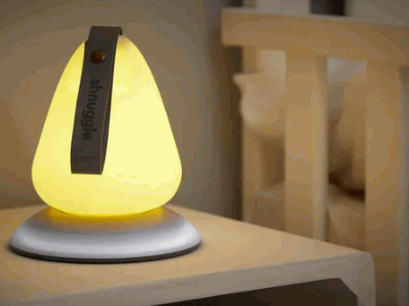
A LED Night Light is a type of energy-efficient lighting solution that is commonly used in households. It utilises LED technology to provide illumination during the night for various purposes such as comforting children, enhancing visibility in dark spaces, or serving as a low-energy alternative to traditional incandescent night lights in the UK.
LED night lights are not only practical but also versatile, finding applications in bedrooms, corridors, bathrooms, and even nurseries due to their gentle glow. The benefits of using these lights are manifold, including their long lifespan, immediate illumination upon activation, and cool operation that eliminates any risk of burns. Their energy-saving features make them an environmentally friendly choice, playing a significant role in reducing electricity consumption and overall carbon footprint. LED technology revolutionises the concept of night lighting, offering a blend of functionality, aesthetics, and eco-friendliness.
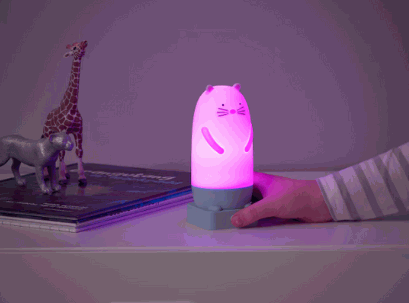
LED Night Lights operate by utilising Light Emitting Diodes (LEDs) to convert electrical energy into light energy efficiently. Unlike traditional incandescent nightlights that produce light by heating a filament, LED nightlights in the UK use semiconductor materials to generate illumination, resulting in a more energy-efficient and long-lasting lighting solution.
This innovative technology allows LED night lights to consume significantly less power while providing bright and consistent light. LEDs emit light when current flows through them, releasing photons that illuminate the surroundings. The efficiency of LED technology is commendable, as it minimizes heat loss and focuses on producing light directly, reducing energy waste. The long lifespan of LED bulbs means fewer replacements and less material waste, making them a sustainable choice for environmentally conscious consumers.
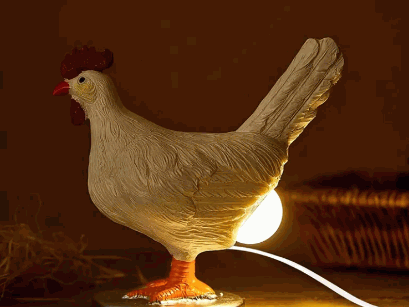
Using a LED Night Light offers various benefits, including energy efficiency, low electricity consumption, and a longer lifespan compared to traditional incandescent nightlights in the UK.
LED night lights not only help reduce your electricity bills but also contribute to a greener environment by requiring less energy to function. Their long lifespan eliminates the need for frequent replacements, saving you both time and money in the long run. What's more, the bright light output from LED night lights ensures clear visibility in dark spaces, adding a sense of security to your home. With their cost-saving and energy-efficient characteristics, LED night lights are undoubtedly a smart investment for any household.
Energy efficiency is a key feature of LED nightlights, as they require less energy to produce bright illumination compared to traditional incandescent nightlights. LED technology ensures that energy consumption is minimised while providing sufficient light output, making them a sustainable lighting choice for households in the UK.
LED night lights have significantly lower power consumption levels, which not only help in reducing electricity bills but also contribute positively to the environment by decreasing overall energy usage. This efficiency is due to the way LED technology converts electricity into light without generating excess heat, making them an ideal eco-friendly lighting solution for modern homes.
LED night lights have a significantly longer lifespan compared to traditional incandescent night lights commonly used in the UK. The durable nature of LED technology ensures that these lights can last for thousands of hours, reducing the need for frequent replacements and maintenance.
LED night lights are designed to withstand the test of time, offering a remarkable longevity that surpasses conventional lighting solutions. With an average lifespan of up to 50,000 hours, these energy-efficient fixtures outshine their incandescent counterparts in terms of durability.
The robust construction of LED night lights means they are less prone to damage from external factors, ensuring consistent performance over an extended period. This longevity not only guarantees peace of mind for users but also translates into substantial cost savings over time.
LED nightlights produce minimal heat compared to incandescent nightlights, making them a safer and more energy-efficient lighting option for households. The low heat emission of LED technology reduces the risk of burns or fire hazards, providing a secure lighting solution for various applications.
The reduced heat output of LED night lights contributes significantly to their longevity and durability, as excessive heat can decrease the lifespan of traditional lighting sources. This characteristic makes LEDs not just safer but also more cost-effective in the long run, requiring less frequent replacements. The low heat emission of LED night lights enhances their eco-friendliness by minimising energy consumption, aligning with sustainable practices, and reducing their carbon footprint.
The combination of enhanced safety, energy efficiency, and reduced fire risk makes LED night lights a smart choice for households looking to illuminate spaces efficiently and responsibly.
LED night lights offer versatility in terms of design, brightness levels, and features, catering to various lighting needs and preferences in households across the UK. From adjustable brightness settings to decorative designs, LED night lights provide customisable options for different applications.
Whether you are looking for a soft, ambient glow for a nursery or a bright, practical light for a hallway, LED night lights can be tailored to suit your specific requirements. The versatility of these lights extends beyond functionality, as they also come in a range of shapes and sizes, from sleek, modern designs to charming novelty motifs. LED night lights are energy-efficient and long-lasting, making them a sustainable choice for environmentally conscious consumers.
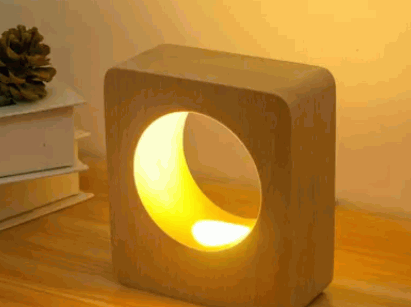
Calculating the cost of running a LED Night Light involves considering factors such as the wattage of the light, the cost of electricity in the UK, the number of hours the light is used each day, and the overall energy consumption of the LED night light.
One of the key components influencing the running cost of a LED night light is wattage. The wattage indicates how much power the light consumes, impacting the electricity bill. Higher-wattage bulbs typically result in increased energy expenditure.
The electricity rates play a significant role in determining operational expenses. In the UK, the cost of electricity fluctuates, directly affecting the overall cost of running the night light. It's crucial to keep abreast of the current rates to estimate the ongoing expenses accurately.
The usage patterns of the LED night light also contribute to its running cost. Extending the duration of usage each day will naturally lead to higher electricity bills. Conversely, utilising the light judiciously can result in substantial savings over time.
By focusing on minimising energy consumption through the selection of energy-efficient bulbs and adopting prudent usage habits, individuals can not only reduce their environmental impact but also enjoy significant cost-saving benefits in the long run.
The wattage of a LED night light plays a crucial role in determining its energy consumption and operating costs. Lower-wattage lights are more energy-efficient and cost-effective to run, as they consume less electricity while providing adequate illumination for night-time use.
Choosing a LED night light with the right wattage can make a significant difference in your energy bills over time. Higher-wattage lights may provide brighter light, but they also consume more power, resulting in increased electricity costs. It's essential to strike a balance between sufficient brightness and energy efficiency.
Opting for LED night lights with lower wattage not only saves you money on your energy bills but also contributes to a more sustainable and environmentally friendly lifestyle. These energy-efficient lights have a longer lifespan and emit less heat, making them safer to use in households with children or pets.
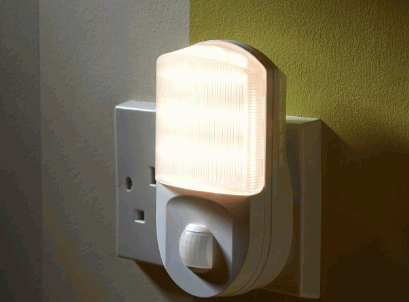
The cost of electricity in the UK directly impacts the overall expense of running a LED night light. Higher electricity rates result in increased operational costs for using the light over time, making it essential to consider energy prices when calculating the total expense.
When analysing the impact of electricity costs on LED night lights, it becomes evident that varying energy rates can significantly affect the final expenditure. For instance, locations with lower electricity tariffs can lead to more cost-effective operation of these lights, resulting in decreased long-term expenses. Conversely, areas with higher electricity rates may necessitate more strategic planning to optimise usage and minimise costs. This underscores the importance of adopting energy-efficient lighting solutions to combat escalating electricity expenses and promote sustainable practices.
The number of hours a LED night light is used each day directly influences its running costs, as extended use results in higher electricity consumption.
Optimising the duration for which LED night lights are in use can significantly impact the operational expenses within a household. By strategically managing the usage hours, individuals can not only contribute to energy savings but also enhance the overall cost efficiency of their lighting setups. The relationship between usage patterns and cost efficiency is crucial to consider when aiming to create a sustainable and budget-friendly environment at home.
To calculate the cost of running a LED night light, multiply the wattage of the light by the number of hours it is used daily, then multiply the result by the electricity rate per kilowatt-hour (kWh). This formula provides an estimate of the daily, monthly, and yearly expenses associated with operating the LED light.
Using this simple yet effective method, individuals can gain insights into the financial implications of using LED night lights. By understanding and analysing these costs, one can make informed decisions on usage patterns and potentially save on electricity bills. To achieve a more precise calculation and gain a deeper understanding of energy consumption, utilising specialised energy calculators comes highly recommended.
Several factors can influence the cost of running a LED Night Light, including the type and quality of the light, usage patterns, and fluctuations in electricity rates in the UK. Understanding these variables is essential for managing expenses and maximising energy savings when using LED lighting solutions.
In terms of the type of LED night light used, energy-efficient LED bulbs are typically more expensive upfront but can significantly lower operational costs in the long run, making them a sustainable choice.
Individual usage habits play a crucial role in determining electricity consumption. Simple practices like turning off lights when not in use or utilising dimmer settings can make a noticeable difference in monthly bills.
Keeping an eye on electricity pricing trends allows consumers to adjust usage patterns according to the most cost-effective times, ultimately reducing overall expenses.
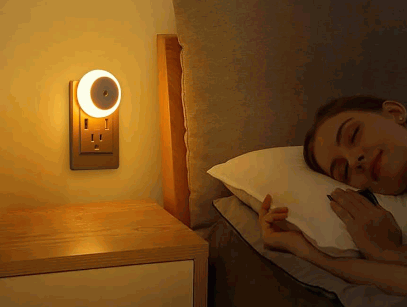
The specific type of LED night light chosen for use can significantly affect the associated running costs and energy consumption. Different types of lights may vary in wattage, brightness levels, and efficiency, impacting the overall expense of operating the LED light in households in the UK.
For instance, opting for a LED night light with lower wattage can lead to reduced energy usage and subsequently lower electricity bills. Similarly, choosing a model with higher energy efficiency ratings can contribute to significant long-term savings. It is essential for consumers to consider these factors when selecting LED night lights to ensure not only cost-effectiveness but also environmentally friendly practices. By understanding the nuances of LED technology and its impact on energy consumption, individuals can make informed decisions that align with their budgetary constraints and sustainability goals.
The brand and quality of a LED night light can impact its performance, durability, and energy efficiency, ultimately influencing the running costs associated with its usage. Opting for reputable brands and high-quality lights can ensure long-term savings and reliable illumination in UK households.
When selecting a LED night light, it's crucial to consider the reputation of the brand and the overall quality of the product. Not only does this affect how well the light functions and how long it lasts, but it also plays a significant role in the amount you pay for energy consumption. By investing in lights from trusted manufacturers known for their durability and efficiency, homeowners can significantly reduce their electricity expenses over time.
The usage patterns of a LED night light, such as the frequency of use, duration of operation, and intensity settings, can affect the overall running costs and energy consumption. Optimising usage patterns based on lighting needs and efficiency goals can lead to significant savings over time in UK households.
For instance, adjusting the intensity settings of the LED night light to match the required brightness can help in reducing unnecessary energy consumption. Being mindful of when to switch off the night light, especially during daylight hours or when not in use, can further contribute to cost savings.
Tailoring your usage habits to fit your specific lifestyle and lighting requirements is crucial for maximising energy efficiency and minimising expenses associated with running LED night lights. By incorporating these simple yet effective strategies, households can not only save money but also reduce their overall carbon footprint.
Fluctuations in electricity rates in the UK can directly influence the operational costs of running a LED night light. Understanding and monitoring changes in energy pricing can help households adjust usage habits, explore cost-saving options, and make informed decisions regarding energy-efficient lighting solutions.
For instance, during periods of higher electricity rates, the expenses related to keeping a LED night light on throughout the night can significantly increase. This can lead to unexpected spikes in the monthly energy bills, impacting overall household budgets.
Managing these variations requires proactive measures such as scheduling the use of night lights strategically, opting for energy-efficient models, and taking advantage of off-peak hours when rates are lower to minimise costs.
Staying informed about electricity rates is crucial for households looking to optimise their energy expenditure. By keeping abreast of tariff changes and market trends, individuals can make smarter choices on when and how to use night lights, ensuring both cost savings and environmental sustainability.
There are several strategies to save money on running a LED Night Light, including choosing energy-efficient models, using timers or motion sensors for controlled operation, turning off the light when not in use, and considering solar-powered options for sustainable and cost-effective lighting solutions in the UK.
One key aspect to consider when looking to reduce costs associated with LED night lights is the energy-saving practices that can be implemented. By investing in energy-efficient models, you not only lower your electricity bills but also contribute towards a greener environment.
Utilising timers or motion sensors allows for more controlled and efficient operation of the night light, ensuring it is only in use when necessary. Adopting simple habits like switching off the light when not required can significantly impact your energy consumption and expenses.
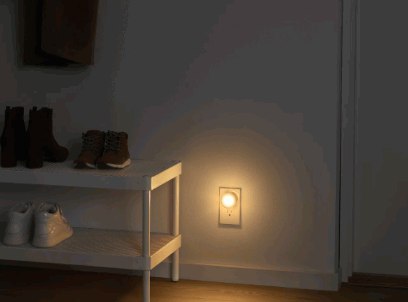
Selecting energy-efficient LED night lights with high efficacy ratings and low power consumption can help reduce operating costs and minimise electricity usage in UK households.
By choosing night lights that meet strict efficiency standards and offer long-lasting performance, households can ensure they are making a sustainable choice for their lighting needs.
Investing in energy-efficient LED night lights not only lowers utility bills but also contributes to reducing the carbon footprint. By transitioning to LED lighting options, homeowners can enjoy significant cost savings over time, as these lights generally last longer and have lower maintenance requirements than traditional alternatives.
Incorporating timers or motion sensors in LED night lights enables automated control over their operation, ensuring efficient use and reducing unnecessary energy consumption.
Timers allow users to schedule when the LED night lights turn on and off, adapting to different daily routines effortlessly. On the other hand, motion sensors detect movement, triggering the light to illuminate only when presence is detected, offering both convenience and security. Smart controls, such as smartphone apps or voice activation, further enhance efficiency by providing remote access and personalised settings. Leveraging these features not only reduces electricity bills but also contributes towards a more sustainable environment by minimising energy wastage. Tailoring the use of timers, motion sensors, and smart controls according to specific needs can significantly enhance the effectiveness and cost-effectiveness of LED night lights in homes.
Turning off a LED night light when it is not needed can significantly contribute to energy savings and reduce operational costs. Encouraging responsible usage habits, such as switching off the light during daylight hours or when not in use, promotes efficiency and cost-effectiveness in UK households.
By adopting simple practices like unplugging devices when fully charged or not in use, households can further reduce their electricity consumption and environmental impact. Conserving energy is not only beneficial for the environment but also helps in lowering electricity bills. Setting timers on appliances like washing machines and dishwashers to operate during off-peak hours can lead to additional savings. Embracing energy-efficient technologies, like smart thermostats and LED bulbs, can also play a significant role in reducing overall energy usage and fostering a sustainable lifestyle.
Explore: Is LED Lighting Sustainable
Opting for solar-powered LED night lights harnesses renewable energy sources to illuminate spaces, offering a sustainable and cost-effective lighting solution for UK households. Solar-powered lights can operate independently from the grid, reducing electricity bills and enhancing environmental sustainability.
These innovative lights rely on solar power to charge during the day, converting sunlight into energy that can be used during the night, eliminating the need for electricity consumption. This not only leads to significant cost savings but also helps reduce the carbon footprint, contributing to a cleaner and greener environment. Solar-powered LED night lights require minimal maintenance, making them a hassle-free and durable lighting option for homes. By choosing sustainable lighting alternatives like these, homeowners can play a part in conserving energy resources and promoting environmental consciousness in their communities.
61a, Walton St, Walton On The Hill, Tadworth,
Surrey, KT20 7RZ
info@amorybrown.co.uk